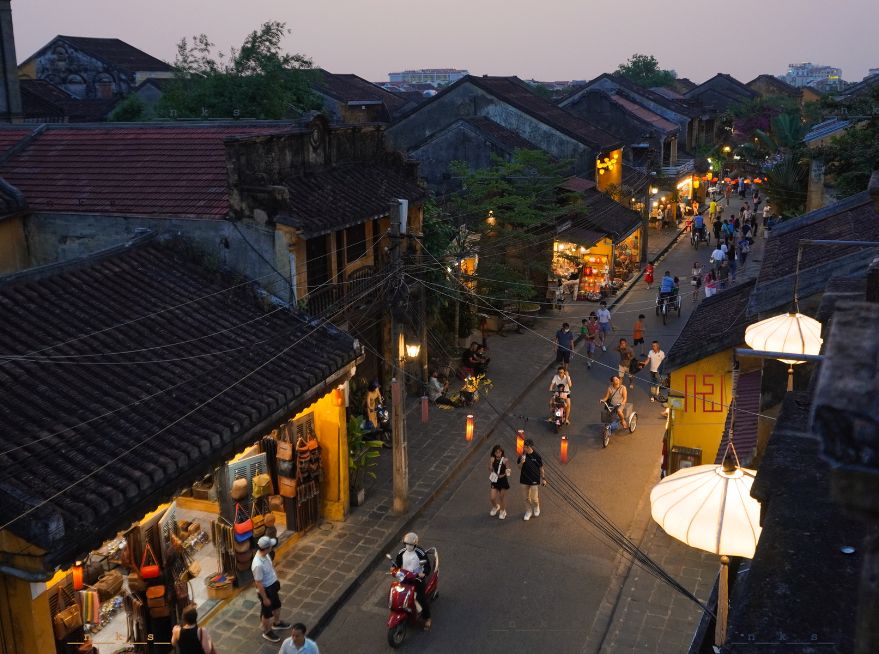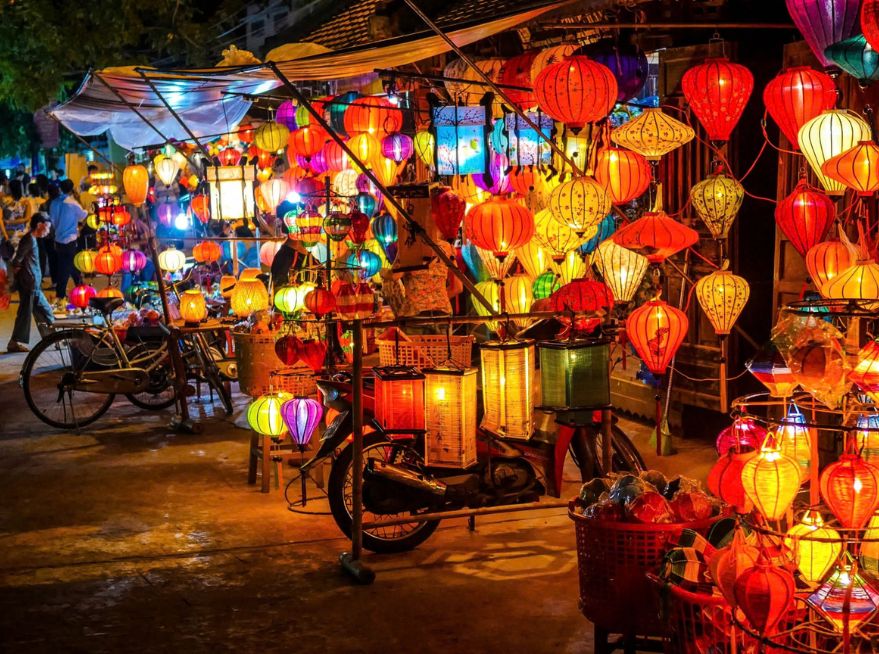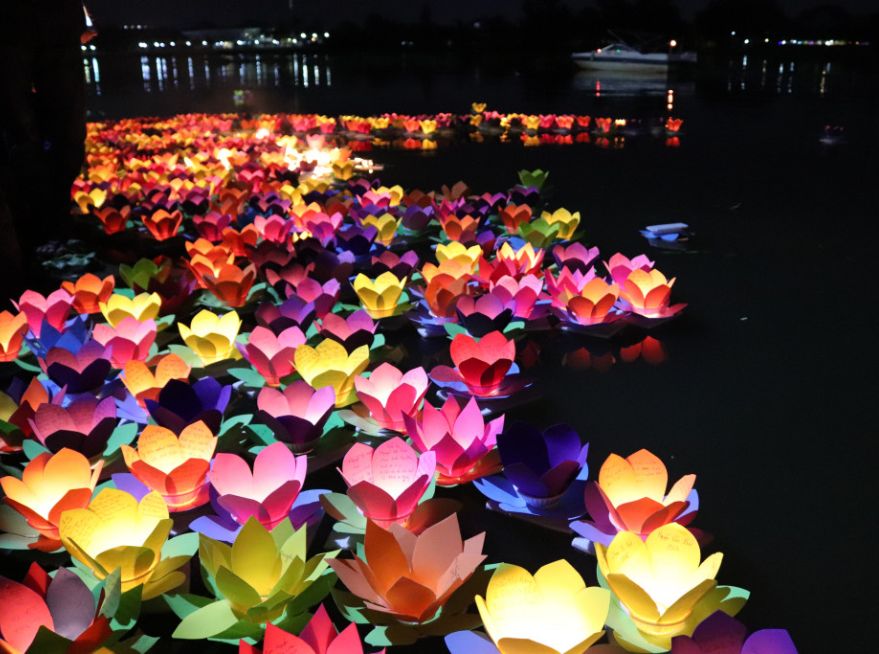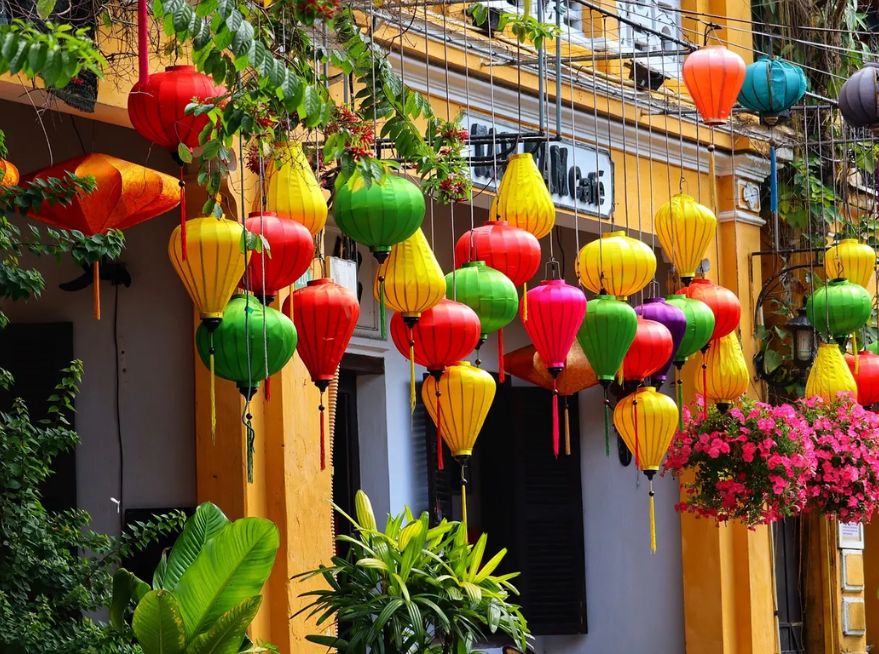Nestled along Vietnam’s central coast, Hoi An is a charming town that captivates visitors with its ancient streets, colorful lanterns, and centuries-old traditions. Recognized as a UNESCO World Heritage Site, Hoi An has become one of Southeast Asia’s most beloved destinations for travelers seeking culture, beauty, and relaxation. But to truly experience the magic of this town, it’s essential to plan your trip during the best time to visit Hoi An.
In this comprehensive guide from Indochina Today Travel, we’ll explore the optimal seasons for travel, weather patterns, cultural events, and everything you need to know to make the most of your Hoi An adventure.
Understanding Hoi An’s Climate

Hoi An enjoys a tropical monsoon climate, which means the town has two main seasons: the dry season and the rainy season. Each season brings its own unique ambiance and travel advantages.
Dry Season: February to August
The dry season is widely considered the best time to visit Hoi An. From February to August, the weather is typically sunny, with clear skies and low humidity. March, April, and May are especially ideal, with daytime temperatures ranging between 25°C to 30°C (77°F to 86°F). The coastal breeze keeps the heat manageable, and there’s little risk of heavy rainfall disrupting your itinerary.
This is also the peak season for tourists, as the pleasant climate is perfect for exploring the Ancient Town on foot, lounging at An Bang Beach, or embarking on Vietnam sightseeing tours to nearby My Son Sanctuary or the Marble Mountains.
Rainy Season: September to January
The rainy season in Hoi An begins in September and continues through January. During this period, the town experiences intermittent rainfall, increased humidity, and occasional flooding due to typhoons. While some travelers might shy away from the wet season, it does come with certain perks: fewer crowds, discounted hotel rates, and a tranquil atmosphere.
October and November are the wettest months and are generally not recommended for beachgoers or those planning water-based activities. However, if you’re more interested in culture and indoor experiences like cooking classes or visiting temples, this might still be a worthwhile time to visit.
Month-by-Month Guide to Visiting Hoi An

Let’s break it down further with a month-by-month look at what to expect in Hoi An throughout the year.
January
January marks the end of the rainy season. Rainfall decreases significantly, and temperatures begin to rise. It’s a great time for walking tours and cultural discovery. You may also catch early preparations for the Lunar New Year, or Tet.
February
February is arguably the best time to visit Hoi An. It’s dry, sunny, and cool—perfect for both sightseeing and beach activities. Tet often falls in this month, offering travelers the chance to experience Vietnam’s most important holiday, complete with fireworks, traditional games, and bustling markets.
March to May
These spring months offer consistently sunny days and moderate temperatures. Hoi An’s Old Town shines under the sun, and the beaches start to fill with visitors. The Cham Islands become accessible by boat, opening the door to snorkeling and diving opportunities.
June to August
This is the hottest time of the year, with temperatures often reaching 35°C (95°F) and high humidity levels. While it’s warm, it’s also ideal for beach lovers. An Bang and Cua Dai beaches are perfect spots for sunbathing, swimming, and sipping cocktails under coconut palms.
July and August are also popular among families traveling on summer breaks. Many Vietnam holiday packages include Hoi An in their itineraries during these months.
September to November
Rain begins to dominate the forecast. These months are less ideal for those looking to explore outdoors or spend time at the beach. Flooding is common in the Old Town, though some tourists find this photogenic and fascinating. Bring waterproof gear and flexible travel plans if visiting during this time.
December
The rain starts to taper off in December, though some drizzle may still occur. The holiday season brings decorative lights and festive spirit, especially around Christmas and New Year’s Eve, which are celebrated more openly in tourist-friendly areas.
The Magic of Hoi An’s Lantern Festivals

No guide to the best time to visit Hoi An would be complete without mentioning the monthly Lantern Festival. Held on the 14th day of each lunar month, this magical event sees the Ancient Town turn off its electric lights and come alive with the soft glow of silk lanterns.
Locals release floating paper lanterns into the Thu Bon River while prayers, music, and traditional games fill the streets. The best months to experience this festival are during the dry season, especially from February to May. The weather is clear, the skies are open, and the experience is unforgettable.
If your goal is to witness this unique cultural celebration in all its glory, planning your trip around the lunar calendar is essential.
Activities That Align With Each Season
Depending on when you decide to go, Hoi An offers a variety of activities that align with the climate and cultural calendar.
Best Activities During the Dry Season
Walking and cycling tours of the Old Town
Relaxing at An Bang or Cua Dai beaches
Exploring My Son Sanctuary and Marble Mountains
Lantern Festival (especially from February to May)
Diving or snorkeling in the Cham Islands
Best Activities During the Rainy Season
Cooking classes and food tours
Spa and wellness retreats
Visiting museums and temples
Tailor-made clothing experiences
Photography of flooded Ancient Town streets
Cultural Events and Local Holidays
If you’re interested in culture, the best time to visit Hoi An might coincide with one of the many local festivals:
Tet Nguyen Dan (Lunar New Year) – Usually in late January or February
Mid-Autumn Festival – Celebrated in September with lion dances and mooncakes
Hoi An Full Moon Festival – Occurs every month with lanterns and folk performances
Vietnamese Women’s Day (October 20) – Recognized with flowers and traditional clothing displays
These events add a rich layer to your travel experience and are excellent for cultural immersion.
Why Hoi An Is a Must-Visit in 2025

Looking ahead, 2025 is expected to be a standout year for tourism in Vietnam, and Hoi An will undoubtedly be at the top of many travelers’ lists. Post-pandemic recovery efforts have led to significant enhancements in tourism infrastructure, including upgraded transportation services, eco-tourism initiatives, and cultural preservation programs.
For those planning a trip in the coming year, the best time to visit Vietnam 2025 will likely mirror traditional seasonal trends: the dry months between February and May. During this window, Hoi An promises an ideal combination of pleasant weather, vibrant cultural activities, and fewer chances of rain disrupting your plans.
Moreover, tourism providers like Indochina Today Travel are curating tailored Vietnam sightseeing tours that highlight Hoi An’s hidden gems—rural villages, local workshops, and traditional craft villages that offer a more intimate look into Vietnamese life. These bespoke experiences will be in high demand among travelers seeking meaningful, immersive journeys in 2025.
Travel Tips for Visiting Hoi An
To ensure you make the most of your time in this cultural haven, here are several practical travel tips:
Book Accommodations in Advance
Hoi An is a small town with a limited number of boutique hotels and guesthouses in the Old Town area. If you plan to travel during the high season, especially around festivals, book your accommodations early to secure the best options.
Mind the Tides and Floods
During the rainy season, some streets in Hoi An’s Ancient Town can flood. While locals are well-adapted to these conditions, visitors should pack appropriate footwear and flexible travel plans. If you’re not a fan of wet weather, stick to the dry season.
Dress Respectfully
When visiting temples, pagodas, or participating in festivals, modest attire is appreciated. Lightweight, breathable fabrics are best suited to Hoi An’s humid climate.
Try Local Specialties
Don’t miss out on iconic dishes like Cao Lau noodles, white rose dumplings, and banh mi Hoi An. Night markets and riverside restaurants offer the perfect opportunity to dive into Vietnam’s vibrant culinary scene.
Combine with Broader Holiday Packages
Many visitors to Hoi An opt to include it as part of broader Vietnam holiday packages, which may also cover destinations like Da Nang, Hue, and Hanoi. These packages often include guided tours, airport transfers, and curated activities—helping you save time and money.
FAQs: Best Time to Visit Hoi An
Here are three frequently asked questions to help clarify your travel planning:
1. What is the best time to visit Hoi An for beach activities?
The best time to visit Hoi An for beach lovers is between March and August, when the skies are clear and the ocean is calm. An Bang and Cua Dai beaches are perfect for sunbathing and swimming during these months.
2. Is the Lantern Festival worth visiting, and when is it held?
Absolutely. The best time to visit Hoi An for the Lantern Festival is during the dry months, especially from February to May. The festival occurs on the 14th day of each lunar month and is one of the most visually stunning cultural events in Vietnam.
3. Are there specific months to avoid when planning a trip to Hoi An?
Yes. While Hoi An is beautiful year-round, October and November are the wettest months, with a high risk of flooding. If you’re looking for uninterrupted exploration, this may not be the best time to visit Hoi An.
Final Thoughts from Indochina Today Travel
Hoi An is more than just a stop on the tourist map—it’s a journey into Vietnam’s soul. The town’s delicate blend of ancient charm, cultural richness, and natural beauty ensures a truly unforgettable experience. By choosing the best time to visit Hoi An, you unlock the opportunity to witness the town at its most vibrant, peaceful, and magical.
Whether you’re drawn by the allure of its lantern-lit nights, its pristine beaches, or its storied architecture, timing your visit right makes all the difference. And when you’re ready to discover more of Vietnam, Indochina Today Travel is here to guide you with expertly curated Vietnam sightseeing tours and comprehensive Vietnam holiday packages tailored to your travel style.
Let the light of Hoi An lead your journey—and may your experience be as unforgettable as the town itself.
Add: Phuc Loi, Hanoi, Vietnam
Hotline / WhatsApp: +84.988.176.761
Email: sales@indochinatodaytravel.com
Phone: +84.24.6685.5566
Website: indochinatodaytravel.com | dgbtravel.com | vietnamgolflux.com

